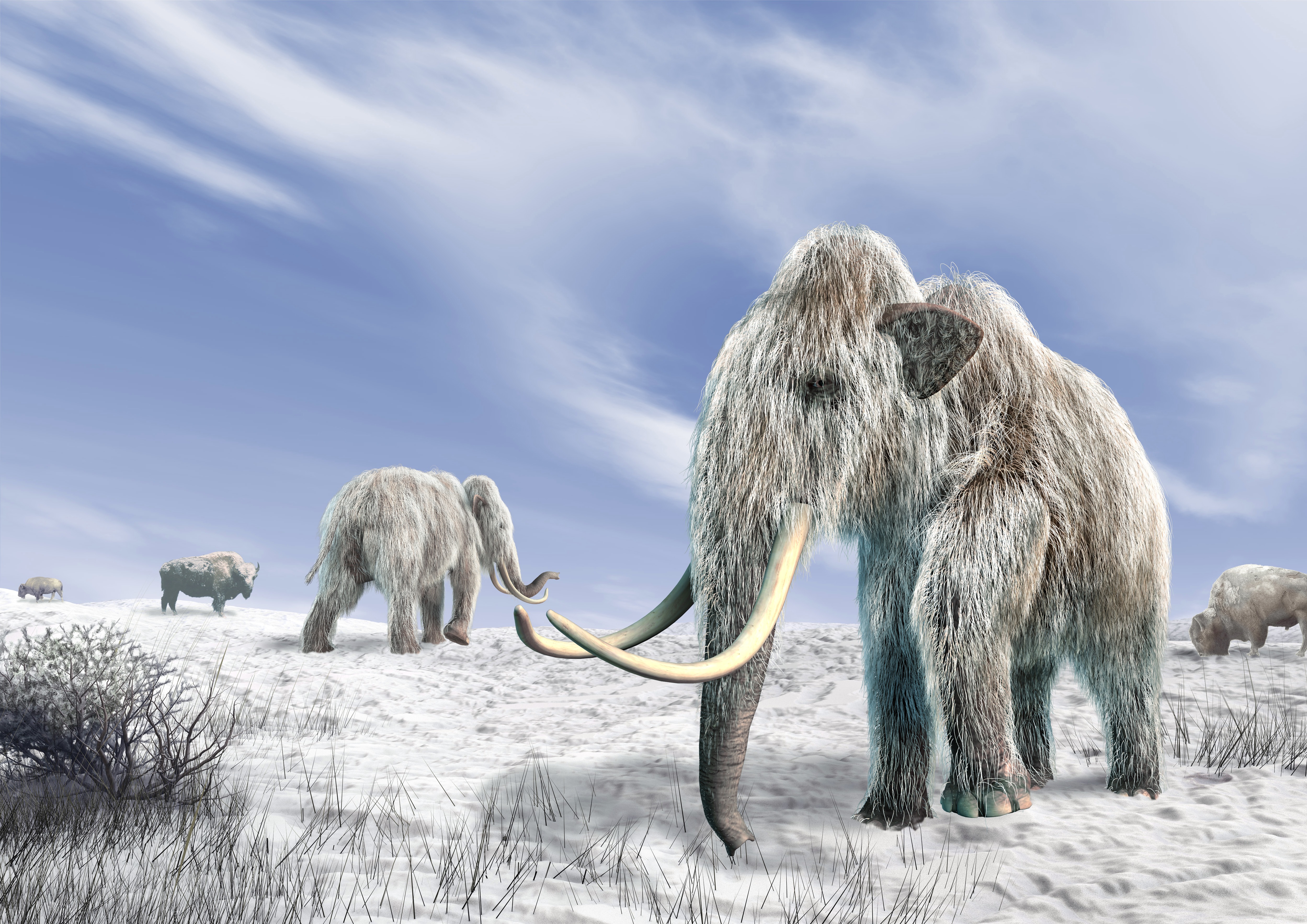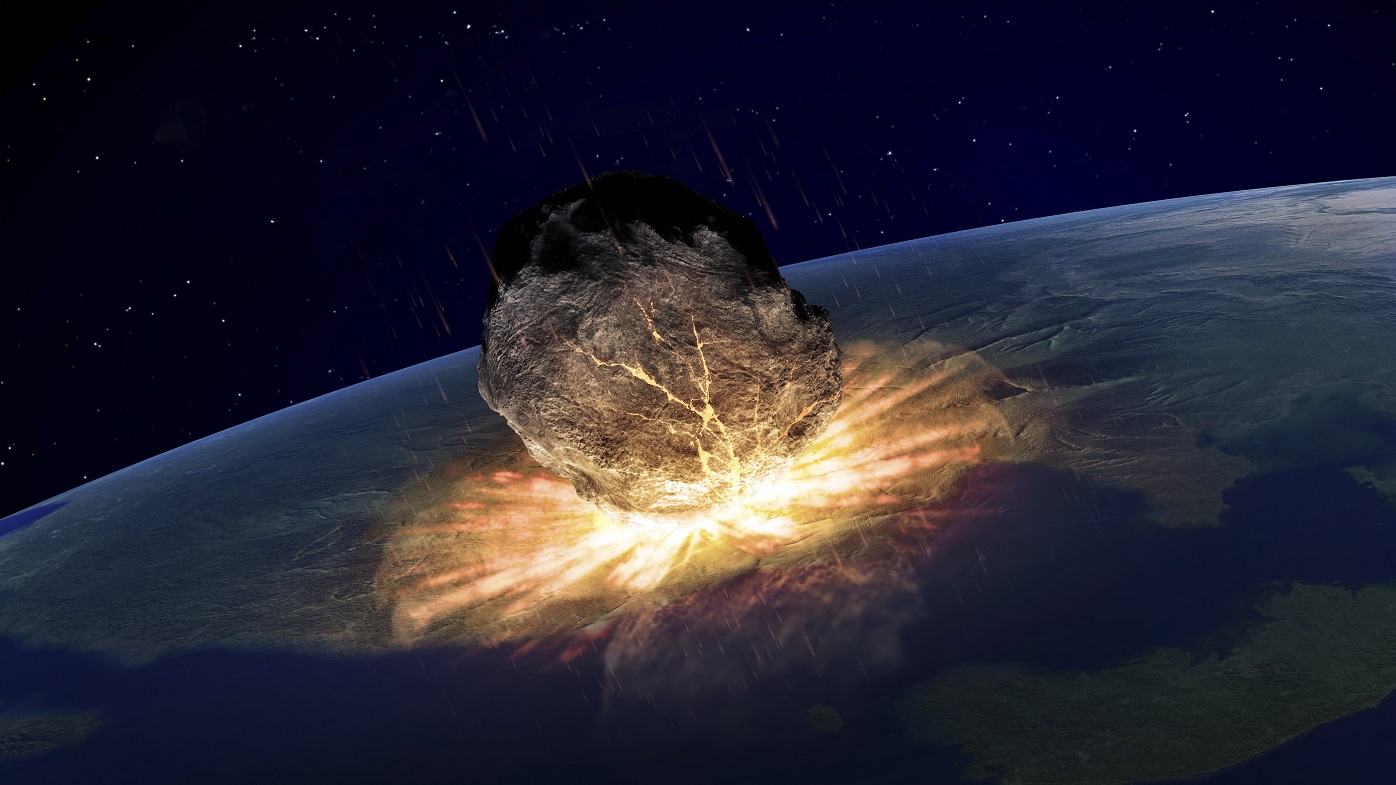Around 13,000 years ago, giant animals such as mastodons, mammoths, saber-toothed cats and ground sloths disappeared from the Earth. Scientists have found evidence in sediment cores to support a controversial theory that an asteroid or a comet slammed into Earth and helped lead to this extinction of ice age animals and cooling of the globe.
It's called the Younger Dryas Impact Hypothesis and was first suggested in 2007. The hypothesis included the idea that an extraterrestrial body impacted Earth 12,800 years ago. This led to an extreme cooling of the environment, which in turn helped cause more than 35 species of large animals to go extinct.
At the same time, human populations declined. The impact also has been suggested as the cause of large, raging wildfires that created enough smoke to block the sun and created an "impact winter," in which cold weather lasts longer than expected after Earth is impacted.

This climate change shifted Earth to conditions similar to the ice age, lasting for about 1,400 years. But reasons for the extinction of animals and decline of humans have been scarce.
Today, evidence of such an impact can be found in platinum spikes. Platinum can be found in asteroids, comets and meteorites. Researchers found them in sediment cores collected from White Pond in Elgin, South Carolina.
Their study published this month in the journal Scientific Reports.
Other examples of excessive platinum grains have been found across Europe, western Asia, Chile, South Africa and North America.
"We continue to find evidence and expand geographically," said Christopher Moore, study author and University of South Carolina archaeologist. "There have been numerous papers that have come out in the past couple of years with similar data from other sites that almost universally support the notion that there was an extraterrestrial impact or comet air burst that caused the Younger Dryas climate event."

Moore has worked on previous research about the locations of different platinum spikes. These different spots around the globe have helped researchers piece together a global puzzle.
"First, we thought it was a North American event, and then there was evidence in Europe and elsewhere that it was a Northern Hemisphere event. And now with the research in Chile and South Africa, it looks like it was probably a global event," Moore said.
The researchers have even found evidence of the point of impact, leading to a crater in Greenland. There, they found platinum and iridium sediments. Iridium was also found at the site of the impact crater associated with the extinction of the dinosaurs. But the crater needs to be dated with precision first.
The hypothesis is named for a wildflower called Dryas octopetala, which sprang up in Europe 12,800 years ago and can thrive even in cold weather.
Some scientists have disagreed with the hypothesis, which is why it's considered controversial.
Many researchers believe that glacial ice dams in the north released a flood of cold water in the north Atlantic Ocean, which circulated around the globe and led to the colder climate. The hypothesis suggests this water was circulated after impact.
"It was bold in the sense that it was trying to answer a lot of really tough questions that people have been grappling with for a long time in a single blow," Moore said.

In White Pond, the researchers took samples from the sediment beneath the pond and dated them. Around the time of the suspected impact, they found a large amount of platinum spikes, as well as soot suggestive of wildfires.
However, the researchers regard the impact as a factor, not the main culprit.
"We speculate that the impact contributed to the extinction, but it wasn't the only cause," Moore said. "Overhunting by humans almost certainly contributed, too, as did climate change. Some of these animals survived after the event, in some cases for centuries. But from the spore data at White Pond and elsewhere, it looks like some of them went extinct at the beginning of the Younger Dryas, probably as a result of the environmental disruption caused by impact-related wildfires and climate change."
Evidence continues to build, including the discovery of meltglass at other sites, the researchers said. Meltglass is indicative of impact by a cosmic object because heat and pressure are required to fuse particles together.
"Those are big debates that have been going on for a long time," Moore said. "These kinds of things in science sometimes take a really long time to gain widespread acceptance. That was true for the dinosaur extinction when the idea was proposed that an impact had killed them. It was the same thing with plate tectonics. But now those ideas are completely established science."
Source: https://ift.tt/330pClQ
Comments
Post a Comment